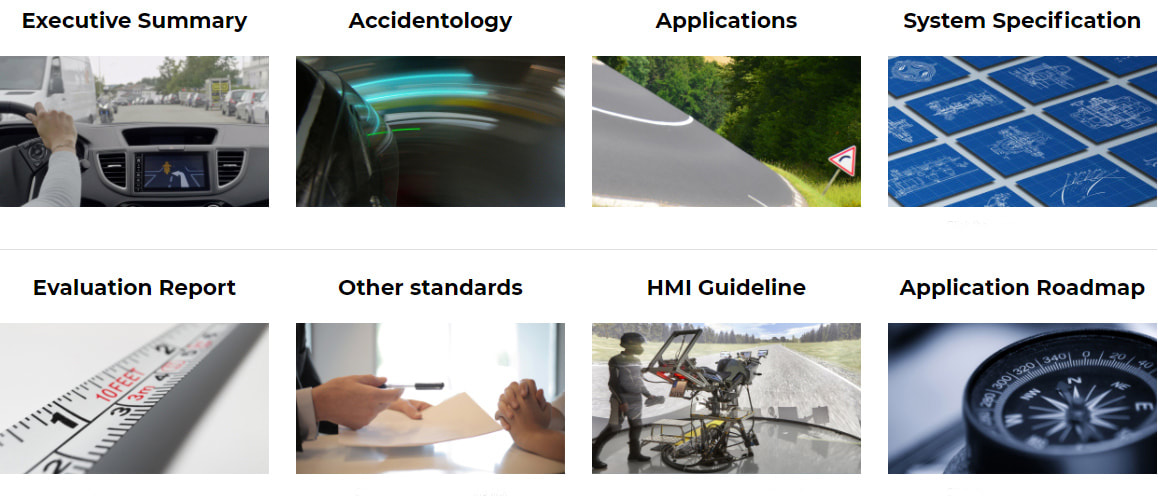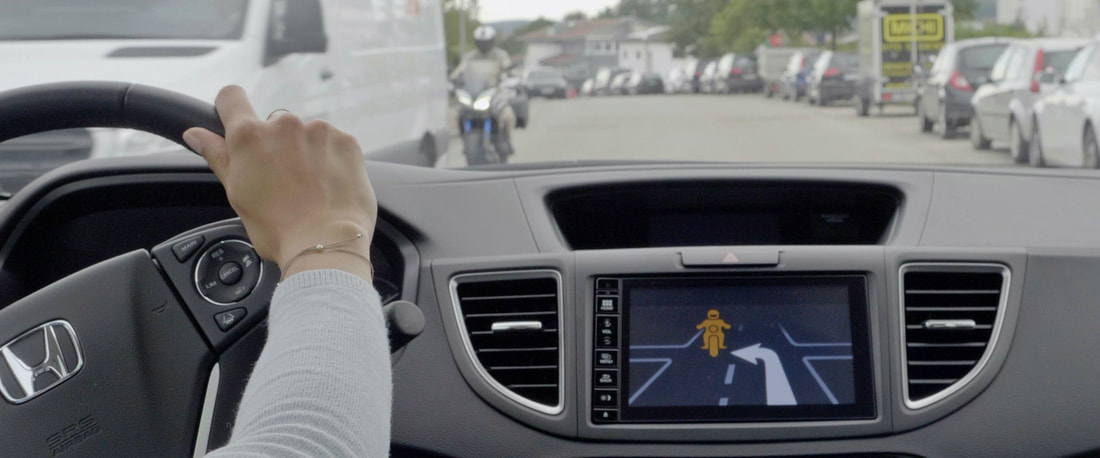|
From the European Commisson "We really want to make a difference". Claire Depré, Head of Unit, Sustainable & Intelligent Transport, DG Mobility and Transport, European Commission, states: "I am really grateful to CMC for the work carried out, for bringing much more innovation and contributing to the safety of the overall transport system.” Have a look at the 5-minute video where she emphasizes the Commission's strategy towards the future, including 'Green Deal' and 'Vision Zero' and the importance of Vehicle-to-Vehicle communication therein; as well as the appreciation for the motorcycle industry to be involved in this. From the CMC president "A great stepping stone". Yoshishige Nomura, president of CMC in 2020, reminds that CMC is now composed of more than 20 organisations including OEMs, suppliers and research institutes and that the Basic Specification for motorcycles was made by the joint work of all members. He speaks out his appreciation for the cooperation that was received from all other stakeholders including the car industry. He also talks about the expectations for the future; Have a look at his 3-minute video. Founded in 2016, CMC aims at joining forces between motorcycle manufacturers, suppliers, research institutes and associations, to make motorcycles part of the future connected mobility. Until then, C-ITS (Cooperative Intelligent Transport System) specifications for passenger cars have not sufficiently taken motorcycle specific safety factors and challenges into consideration. An important goal therefore set out by CMC was to define a first Basic Specification for motorcycles to connect and ‘talk the same language’ to other vehicles or infrastructure by means of wireless communication. This is being achieved with the official publication of a set of documents to address various topics related to the introduction of C-ITS for motorcycles. These documents are now available for download on the CMC website. Importance of connectivity for motorcycle safety C-ITS allows road vehicles to communicate with each other, with roadside infrastructure and with other road users. C-ITS has a high potential, especially for motorcycles, to prevent accidents before they occur. Accident analysis shows that more than half of collisions with motorcycles are caused by the other vehicle driver. Not seeing the motorcycle coming, or misjudging distance and speed, are primary accident causes. A closer look at accidents with motorcycles reveal that 72% of the drivers’ failures are because the vehicle driver did not see the motorcycle. This perception failure may be summarized in the statement often heard after such crashes: ‘Sorry, but I didn’t see the motorcycle at all’. CMC believes that such accidents could be mitigated by future technologies, which will enable motorcycles to ‘talk’ to cars and other vehicles. Drivers may be alerted in case critical situations in traffic are foreseen by vehicle connectivity systems. The integration of motorcycles in the C-ITS ecosystem will bring significant safety benefits. CMC has been working on applications in which connectivity would allow to warn drivers and riders of potentially dangerous situations. Towards the future: CMC 'NEXT'
Following a Memorandum of Understanding signed in April, BMW Motorrad, Honda Motor Co. Ltd., KTM AG, Yamaha Motor Co. Ltd, have signed an agreement beginning of December to continue their efforts on motorcycle safety and connectivity in a next step named CMC ‘NEXT’. The scope is wider and the motorcycle experts will be looking at further improvements of the specification while at the same time taking account of new functions supported by on-board sensors both in cars and in motorcycles. * The term ‘motorcycle’ in this text covers all types of Powered Two Wheelers (PTW). |
Archives
May 2024
|
COPYRIGHT 2024 Connected Motorcycle ConsortiumContact Us |
|



 RSS Feed
RSS Feed